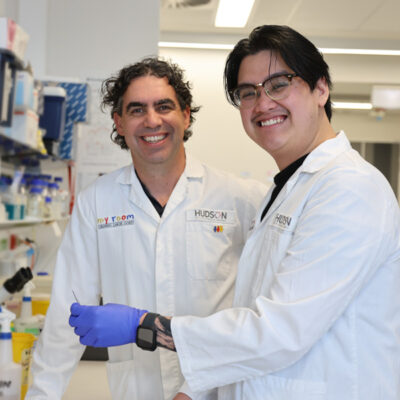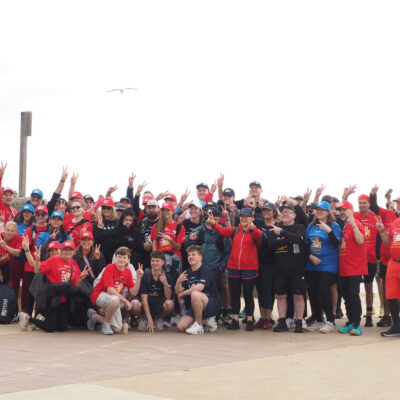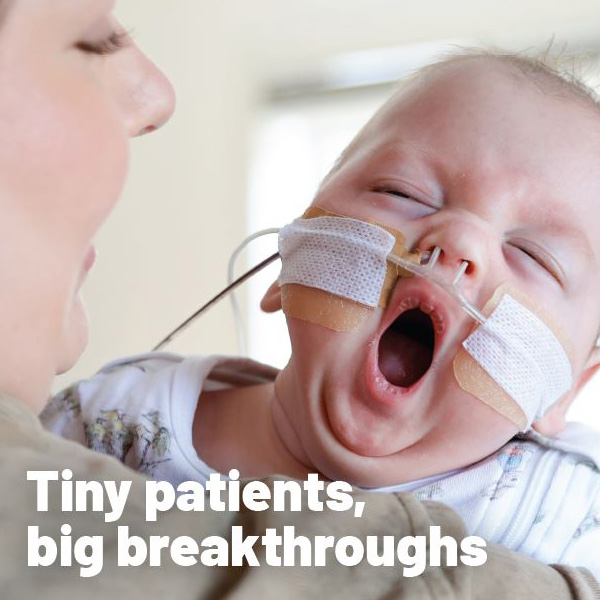Beating childhood cancers
By Rob Clancy, staff writer
A world-class Melbourne collaboration is set to beat the worst childhood cancers.
More than 870 Australian children are diagnosed with cancer each year, and almost 100 of them on average will die.
The Victorian Paediatric Cancer Consortium (VPCC) aims to change this. Funded by a three-year $9.6M Medical Research Future Fund (MRFF) grant, the VPCC unites leading Melbourne research, clinical and academic institutes to treat childhood cancers with a low survival rate and reduce significant harm from treatments.
Co-led by Professor Ron Firestein (Hudson Institute) and Professor David Eisenstat (MCRI, RCH) the team will drive impactful and interdisciplinary research, improve medical care, and train the childhood cancer leaders of tomorrow.
The VPCC partnerships span discovery research and clinical innovation programs; integrated biobanking, data management and bioinformatics platforms; capacity building for training the next generation of researchers and clinicians; and annual scientific symposia and educational events.
The VPCC was made possible thanks to the tireless efforts of the Children’s Cancer Foundation and funding from the Australian Government’s Medical Research Future Fund (MRFF).
VPCC partners – beating childhood cancers
- Hudson Institute of Medical Research
- Monash Children’s Hospital
- Monash University
- Royal Children’s Hospital
- Murdoch Children’s Research Institute
- University of Melbourne
- Peter MacCallum Cancer Centre
- WEHI
- The Children’s Cancer Foundation
Lachy’s story
Thanks to the VPCC, children like Lachy and their families will benefit from coordinated research and clinical care across Victoria, including targeted treatment options and reduced side effects.

Lachy was the perfect baby, until he developed fevers, vomiting and general tiredness at 18 months.
What followed was a nightmare for his family but ultimately gave them hope thanks to the Melbourne researchers who contributed to his state-of-the-art treatment.
Lachy had an 11 cm tumour in his abdomen, caused by a Stage IV neuroblastoma which had spread to his bone marrow. Five rounds of chemotherapy followed, then 11 hours of surgery to remove the tumour – which also removed a kidney – and a stem cell transplant to grow bone marrow. Next came two weeks of daily radiation therapy, and five rounds of immunotherapy. Lachy spent a month in hospital and lost his blond, wavy hair during 14 months of treatment.
Incredibly, he is now more than 18 months cancer-free, with a full head of curly hair, thanks to an amazing medical team. His parents, Ryan and Carly, and seven-year-old sister Isabelle can’t praise them enough.
“It gives you hope, not just for your own child, but for others,” Ryan says. “It also shows in the results – when we were diagnosed it was 50/50 – we knew medical research could make that better.
“Lachy still faces challenges, some hearing loss, the loss of a kidney and some long-term stuff associated with radiation and treatment, but he’s here with us, he’s happy and we’re on the path to being cured,” says Carly.
Contact us
Hudson Institute communications
t: + 61 3 8572 2761
e: communications@hudson.org.au
In this article
About Hudson Institute
Hudson Institute’ s research programs deliver in three areas of medical need – inflammation, cancer, women’s and newborn health. More
Hudson News
Get the inside view on discoveries and patient stories
“Thank you Hudson Institute researchers. Your work brings such hope to all women with ovarian cancer knowing that potentially women in the future won't have to go through what we have!”







